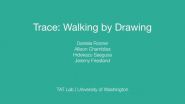(Press-News.org) New developments in personalised and precision medicine (PPM) could offer enormous gains in healthy life expectancy for Americans, but the incentives to develop them are weak, according to Dr Victor Dzau, President of the US Institute of Medicine, and colleagues [1], writing in a Personal View in The Lancet.
PPM tailors medical treatment to the individual characteristics of each patient, according to their susceptibility to a particular illness. But PPM goes beyond just targeting therapies at individuals who are ill; it includes the ability to identify those at highest risk of developing a disease, and who would benefit most from prevention measures.
The authors use a health simulation model--developed by Professor Dana Goldman, Director of the University of Southern California Schaeffer Center for Health Policy and Economics, Los Angeles, USA--to project the future impact of PPM interventions that improve screening and risk prediction technologies to identify individuals at highest risk of developing specific diseases. The model predicts the monetary value of health (years of healthy life) generated by PPM interventions in reducing the incidence of six diseases (cancer, diabetes, heart disease, high blood pressure, lung disease, and stroke) in the US population by 10% and 50% between 2012 and 2060.
The results show that a PPM intervention that reduces the incidence of these six diseases by 10% would generate $96 billion from diabetes and $70 billion from cancer in the form of longer, healthier lives over 50 years. A PPM innovation that reduces heart disease incidence by 50% would generate a staggering $607 billion in improved health over 50 years.
"Preventive, personalised, and precision medicine interventions targeted at reducing heart disease would have the greatest societal benefit, because heart disease is very common and has a relatively large effect on life expectancy," explains Dr Dzau. "Other diseases such as stroke or lung disease are much less prevalent and offer smaller opportunities for creating additional years of healthy life from incidence reduction." [2]
However, while preventive PPM innovations hold huge promise, there are few incentives to develop them. "The current reimbursement environment in the US health care system is characterised by near-term budget pressures, and discourages the development of preventive, personalised, and precision medical interventions in favour of treatments that generate less value overall, but provide greater returns in the short term," [2] adds Dr Dzau.
According to the authors, reimbursement based on a test's value, rather than cost, could strengthen manufacturers' incentives to bring preventive PPM diagnostic tests to market more quickly. "In the USA, private insurers' incentives favour interventions with immediate benefits and short payback periods. But the real benefits of PPM innovations accumulate over a much longer time, as individuals enjoy living longer in good health. Our predictions show that developing a model that generates positive returns for private payers could benefit everyone." [2]
INFORMATION:
NOTES TO EDITORS:
The views expressed in this Personal View are those of the authors and do not necessarily represent the views of the Institute of Medicine.
[1] Professor Geoffrey Ginsburg, Director of the Duke Center for Applied Genomics and Precision Medicine, Durham, NC, USA; Dr Karen Van Nuys, Precision Health Economics, Los Angeles, USA; Professor David Agus, University of Southern California Keck School of Medicine and Viterbi School of Engineering, Beverly Hills, USA; Professor Dana Goldman, Director of the University of Southern California Schaeffer Center for Health Policy and Economics, Los Angeles, USA.
[2] Quotes direct from the authors and cannot be found in text of Personal View.
PROVIDENCE, R.I. [Brown University] -- Surveys of loved ones who lost elderly relatives show that the perception of the quality of care for the dying in the United States has worsened over the last decade. For all the health care industry has done to try to make progress, huge gaps remain between how care is delivered and what patients and their loved ones want, reports a new study in the Journal of Palliative Medicine.
"People are less satisfied with care at the close of life, and I think it's now urgent for us to start thinking about what interventions we can do to ...
DALLAS, May 6, 2015 -- People with hemorrhagic strokes (brain bleeds) are more likely to survive if they are treated at a comprehensive stroke center, according to research published in the Journal of the American Heart Association.
Hemorrhagic strokes, which account for about 13 percent of all strokes, are caused when a weakened blood vessel in the brain ruptures and bleeds in the surrounding brain. Comprehensive stroke centers typically have the specialists and trained personnel to deal with patients with these ruptures or other types of bleeding in the brain. They ...
Insurance coverage has increased across all types of insurance since the major provisions of the federal Affordable Care Act took effect, with a total of 16.9 million people becoming newly enrolled through February 2015, according to a new RAND Corporation study.
Researchers estimate that from September 2013 to February 2015, 22.8 million Americans became newly insured and 5.9 million lost coverage, for a net of 16.9 million newly insured Americans.
Among those newly gaining coverage, 9.6 million people enrolled in employer-sponsored health plans, followed by Medicaid ...
Psychologists are to improve online health information on lung cancer after research showed that family members are more likely to search online to encourage loved ones to seek help.
This is one of the outcomes from research by PhD student Julia Mueller based in the School of Nursing, Midwifery and Social Work at The University of Manchester (part of the Manchester Cancer Research Centre) who will present her study today, Thursday 7 May 2015, at the Annual Conference of the British Psychology Society being held in Liverpool.
Julia Mueller said: "People displaying ...
The ulcer-causing bacterium Helicobacter pylori can directly interact with stomach stem cells, causing the cells to divide more rapidly, according to a new study by researchers at the Stanford University School of Medicine.
The increased cell division was observed in mice, but the findings could explain why H. pylori is a risk factor for gastric cancer in humans, the researchers said.
They used 3-D microscopy to identified colonies of the bacteria deep within human stomach glands, where stem cells and precursor cells that replenish the stomach's lining reside.
One ...
MADISON, Wis. -- The suspicion that the federal Affordable Care Act reduces options for patients to choose their health care providers proves to be true, according to a new study co-authored by David Weimer, a professor with the La Follette School of Public Affairs at the University of Wisconsin-Madison. However, the quality of hospitals in insurance exchange networks was as good or better than those in commercial insurance networks.
The study, just published in the May issue of the journal Health Affairs, compared the hospital networks available to California consumers ...
Creative athletes have been using geographic information systems to transform their running routes into kangaroos, robots and other works of art that they share online, and one romantic cyclist last year even spelled out "Will you marry me, Emily?" with his bike.
A new mobile app developed at the University of Washington does the opposite. The Trace app turns a digital sketch that you draw on your smartphone screen -- a heart, maple leaf, raindrop, sailboat -- into a walking route that you can send to a friend or loved one. The recipient of the "gift" tells the app how ...
Scientists at the National Institutes of Health have solved a long-standing mystery about the origin of one of the cell types that make up the ovary. The team also discovered how ovarian cells share information during development of an ovarian follicle, which holds the maturing egg. Researchers believe this new information on basic ovarian biology will help them better understand the cause of ovarian disorders, such as premature ovarian failure and polycystic ovarian syndrome, conditions that both result in hormone imbalances and infertility in women.
Researchers at the ...
The Alaska salmon fishery is touted as one of the best in the world. When measured with an ecological yardstick, it is - fish stocks are healthy and the fishery is certified by the Marine Stewardship Council as consistently meeting rigorous biological standards. Fish are individually counted as they swim upstream to ensure there are enough to breed.
But Alaska salmon falls short and lags behind some of the world's fisheries in how it benefits local fishermen, processing workers and nearby rural communities, according to a new assessment that ranks the vitality of a fishery ...
Diets of snakes from a temperate region in South America may depend more on phylogeny (ancestry) than ecology, according to a study published May 6, 2015 in the open-access journal PLOS ONE by Gisela Bellini from Instituto Nacional de Limnología, Argentina and colleagues.
Some scientists believe that the deep history hypothesis based on phylogeny -- the history of evolution, or ancestry and relationships between snakes -- and ecological interactions from the competition-predation hypothesis may act together to determine the structure of snake communities. The authors ...


